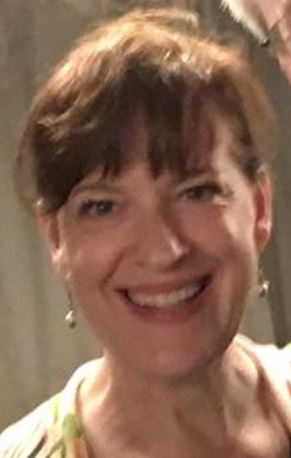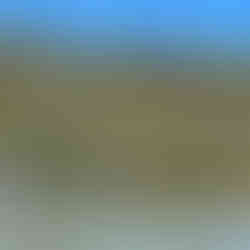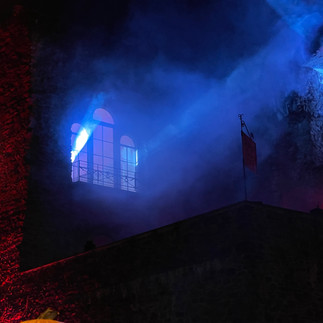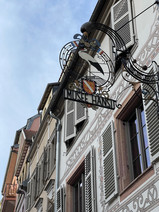A Trip Down the Rhine: Viking River Cruise
- Lisa Hanly

- Jan 28, 2024
- 6 min read
Updated: May 14, 2024

Seven days, four countries, 20 meals and countless snacks…our Viking Rhine River cruise was the delicious European splurge I’d dreamed of for years.
The cruise started in Amsterdam and traveled up the Rhine through the Netherlands, Germany, France and ended in Switzerland. We departed in late October, which turned out to be a bit rainy, but temperatures were mild to a slight chill and nothing could dampen my mood.
Our Viking River Cruise Itinerary, plus add-ons before and after:
Amsterdam — we added on two days before the cruise (click here to read about Amsterdam adventures)
Kinderdijk, Netherlands
Cologne, Germany
Koblenz and Rüdesheim, Germany
Speyer, Germany
Strasbourg, France
Colmar, France and the Black Forest
Basel, Switzerland — we added on an additional day and night in Basel so we could dine at Cheval Blanc, a three-star Michelin restaurant.
I could write volumes about this trip, but to keep this a reasonable length I’m going to hit the highlights instead. Our favorite ports were Cologne and Strasbourg.
COLOGNE, GERMANY
As we entered the town of Cologne Germany, the steady rain lifted to a mild drizzle, which meant our walking tour was much more enjoyable. The local guide highlighted Roman ruins, whimsical fountains and sections of original Roman aqueducts, all with a sense of humor. In addition, he gave great advice on the pretzels (I had no idea there were sweet, almond encrusted varieties!). We finished our tour in front of the iconic Cologne Cathedral.
After the walking tour, we stopped for lunch at FRÜH, a traditional German brew pub with a connecting hotel. The FRÜH brand has been making Germany’s famous Kölsch beer for more than 100 years. Kölsch is light and drinkable and the way it is traditionally served is once you order a glass, the waiter keeps bringing replacement glasses of Kölsch until you put your coaster over the top of your glass to indicate you are done. Several glasses were just right to accompany our fantastic traditional German lunches of sausage with potatoes (along with lots of mustard!) and pork schnitzel served with a rich, mushroom cream sauce.
But beyond sausages and beer, the highlight for me in Cologne was the cathedral. Knowing I would want to see more of the cathedral than the brief stop on our walking tour, we arranged for a group tour led by the church itself (not affiliated with Viking). Brother Mark, a priest, was an expert guide, and it was well worth spending a sizable chunk of our free time in Cologne inside the cathedral to take this tour.

This 14th-century cathedral, also known as Kölner Dom, is a stunning example of Gothic artistry and is a UNESCO World Heritage site. Spared bombing during WWII, the twin spires are visible for miles and the stained-glass windows fill the space with brilliant colored light. It is the largest Gothic church in Europe.
The stained-glass windows are in great shape as they were taken down and stored during wartime. The stained glass is hundreds of years old, but to my surprise there were also beautiful new windows installed when the cathedral replaced some of the glass that was damaged along the years. One of the windows is by well-known German artist Gerhard Richter, who created a pixelated design that was installed in 2007. Around another corner, it was baffling to see a
stained-glass window (adjacent to medieval windows) where the planet Saturn was displayed in the bottom right corner. We were told this is because Saturn, an electronics firm, donated funds to restore the windows. Once we knew that, we spotted the Saturn logo at electronics/phone stores for the rest of the trip.
Within the cathedral there are many notable things to see, including the massive gold shrine said to hold the relics of the Magi (the three wise men) who visited baby Jesus. The floor mosaics, which were made by the Villeroy and Boch Company during the 19th century, were astonishing to me. How the bright colors and detail exist after so many people have walked over them for years is a mystery.
STRASBOURG, FRANCE
While we loved Cologne, our favorite city on the cruise was Strasbourg where every street looked like a postcard, the food was fantastic, and the Cathedrale Notre-Dame de Strasbourg a marvel.
Built between 1015-1439, the cathedral is the world's sixth-tallest church and a magnificent example of high Gothic architecture. The stained-glass windows were also hidden during WWII and thus preserved. More importantly, the cathedral has a mind-blowing astronomical clock with animated sculptures. The clock shows the official and solar time, date/day, equinoxes, Zodiac signs and the phases of the moon. It was built 1838-1842, based on the engineering of previous clock versions dating to 1352. While it rained during our visit, when it was time to wrap up our day the sun came out over the cathedral in a dramatic fashion and a double rainbow appeared over the church complex.
To maximize our Strasbourg stop, we did not return to the ship after the morning walking tour and made our own lunch plans at an Alsatian focused restaurant, Le Dahu. We ate like kings—chicken cordon bleu, beef bourguignon, tomato tart, fried potatoes with truffles, Aligòt potatoes (a silky, garlic laden mashed potatoes that is half cheese!), more cheese (omg) and some delicious Gewürztraminer to pair. It was a nice stop to rest our feet, get out of the drizzling rain and try an authentic Alsatian meal.
Here are some of the highlights of our other stops and excursions:
Castles Along the Rhine. A rainy day was not going to stop us from outdoor viewing of the stretch of the Rhine featuring dozens of ancient castles. We zipped up our raincoats, grabbed a Viking umbrella and headed to deck to see a wide variety of castles, some now luxury hotels or museums. The crew passed out warm Gluhwein (a mulled holiday-style wine) to those of us braving the cold and Mother Nature rewarded us with a gorgeous rainbow during our viewing time. After the parade of castles, we enjoyed an afternoon visit to the ship lounge where Constantin, the lead bartender, gave a demonstration of how to make Rüdesheim Kaffee – a brandy infused coffee drink with whipped cream. When Constantin asked for a volunteer assistant, I raised my hand not realizing I would then be called the “coffee lady” by my fellow passengers for the rest of the week.
Rüdesheim, Germany. We passed on the Viking excursion dinner and found our own delicious German food in Rüdesheim near the historic Drosselgasse alley. Mike had a tasty "wild" burger of venison and wild boar and I had a lemon-cranberry pork schnitzel. We then stumbled into one of the creepiest haunted houses ever—in a castle, with a beer garden and treats.
Koblenz, Germany. This gorgeous 2,000-year-old city is filled with castles, monuments, a modern art museum, pieces of the Berlin Wall and a historic town square. Our walking tour was enhanced by our entertaining guide, Elmar, a retired marketing executive in his 70s. All of the Viking guides seemed engaged and very educated about their topics, but Elmar was our favorite of the entire week. He lived in the community and added a lot of history and flair to his presentation, pointing out many interesting historical details.
Speyer, Germany. Our walking tour included views of the Speyer Imperial Cathedral, one of the world's largest Romanesque cathedrals and a UNESCO World Heritage site, built between 1030-1061. It's simple yet still surprising that they could build on this scale at that time. Our guide told us how important bread is to Germans and that in the relief carving over the door, the kneeling person is holding a pretzel.
Colmar, France. Our excursion to visit Colmar was worth it to see another perfectly preserved Strasbourg-like town. The half-timbered buildings and cobblestone streets looked like they came straight out of a fairy tale. The shops were mostly (unfortunately!) closed due to it being All Saint's Day. We marveled at the House of Heads Building, built in 1609 and featuring 106 heads (grotesque masks) that decorate the façade. The Hansi Museum and Shop honors Alsatian designer, Jean-Jacques Waltz, whose legacy was seen on many ornate building signs he created. It was fun spotting his work as we strolled through Colmar.

Kinderdijk, Netherlands. A local Dutch guide who grew up near this area took us on a walking tour where we could see 19 preserved windmills from the 18th century. Like all of our tour guides, she was extremely knowledgeable about the topic. I was surprised that we were allowed to climb up into the top of one of the windmills via narrow and rain-slicked stairs to see how a family lived and operated the windmill.
Basel, Switzerland. Our cruise ended in Basel, Switzerland and we chose to extend our time one day and one night before flying home. We enjoyed the modern art at Kunstmuseum Basel, shopping and strolling…but most of all, we loved our splurge at Cheval Blanc, a three-star Michelin rated restaurant ranked as one of the top 100 restaurants in the world. Soon I will add a story about our Cheval Blanc experience.
Every day on our Viking cruise was an adventure with new foods to savor, interesting history to learn through engaging tours and with the advantage of a floating hotel, we were able to see so many places in just one week. I hope to experience another Viking cruise someday.
Considering going on a river cruise?
Read this story to learn more about why I thought our Viking river cruise was an excellent choice, including ship details.
If you've been on a Viking river cruise, let me know about it in the comments!






































































































Comments